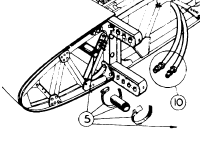Reluctant Poster
Tech Sergeant
- 1,745
- Dec 6, 2006
My experience on large infrastructure structure projects is that unless one individual is given the mandate to do what ever it takes things don't happen quickly. If you truly want to give high priority a Leslie Groves type must be assigned.Actually it was a high priority.
The acceleration into standard combat tanks, 52/60/75/100 &150gal was bogged down with perception that self sealing and low priority materials (wood, plastic, paper) drove Mat.Cmd into a bureaucratic design, build protortype, test and re-design cy cle.
Further complicating the challenge was a real logistics issue of transporting high volume/low weight tanks via shipboard when tanks, aircraft, vehicles, POL were critical.
I agree your point about British not solving the problem. That said the RAF had no high-altitude daylight strategic aims and were content, to a degree with what we provided to augment those few instances.

